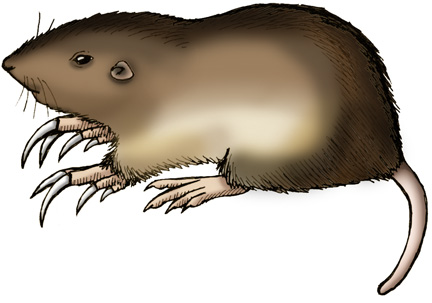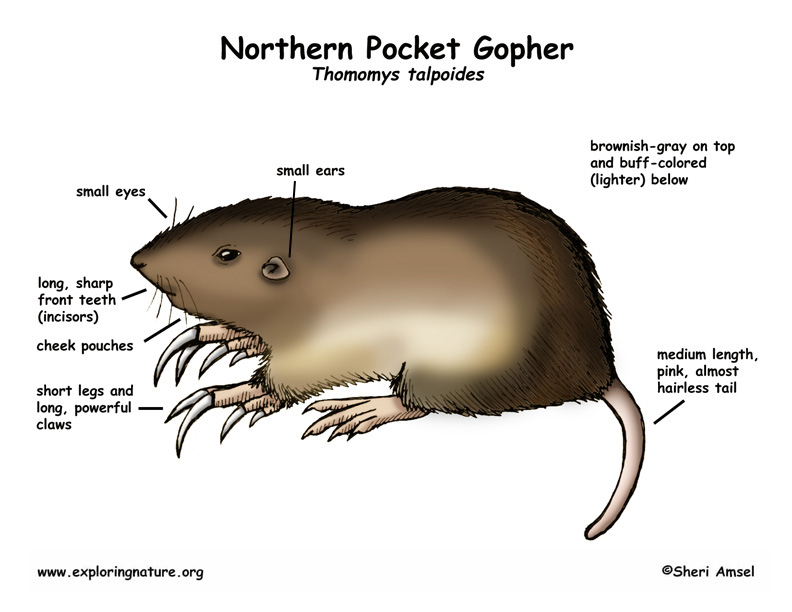

They are found in North America throughout the dry regions of the Midwest, across the Rocky Mountains to the east side of the coastal range from southern Canada through the southern U.S.
They prefer “open” areas – short-grass prairies, dry scrublands, tundra, and high altitude meadows – spending most of their time tunneling underground.
They are about 8 inches long and are brownish-gray on top and buff-colored (lighter) below. They have short legs and long, powerful claws that are made for digging. They have small eyes and ears and cheek pouches. They are rodents with long, sharp front teeth (incisors). They have a medium length, pink, almost hairless tail.
They are territorial and live alone (solitary) except during breeding season. They do not hibernate but may sleep more during very cold or very hot periods.
They eat mostly plants, but will eat roots and fruits. They often stuff their pouches full and bring the food down into the burrow to eat in safety.
They are killed by hawks, owls, snakes, coyotes, foxes and weasels.
Females are pregnant for 2.5 - 3 weeks (gestation) and have about 5 young in late spring. They nurse them for about 8 weeks. The young grow and mature quickly and are themselves ready to breed by about 4 months old.
They can live for up to 5 years in the wild, but rarely live more than 2 years. They are listed as Lower Risk - Least Concern.
Kingdom: Animalia
Phylum: Chordata
Subphylum: Vertebrata
Class: Mammalia
Order: Rodentia
Suborder: Castorimorpha
Family: Geomyidae
Genus: Thomomys
Species: T. talpoides
When you research information you must cite the reference. Citing for websites is different from citing from books, magazines and periodicals. The style of citing shown here is from the MLA Style Citations (Modern Language Association).
When citing a WEBSITE the general format is as follows.
Author Last Name, First Name(s). "Title: Subtitle of Part of Web Page, if appropriate." Title: Subtitle: Section of Page if appropriate. Sponsoring/Publishing Agency, If Given. Additional significant descriptive information. Date of Electronic Publication or other Date, such as Last Updated. Day Month Year of access < URL >.
Amsel, Sheri. "Pocket Gopher (Northern)" Exploring Nature Educational Resource ©2005-2024. December 13, 2024
< http://exploringnature.org/db/view/489 >

